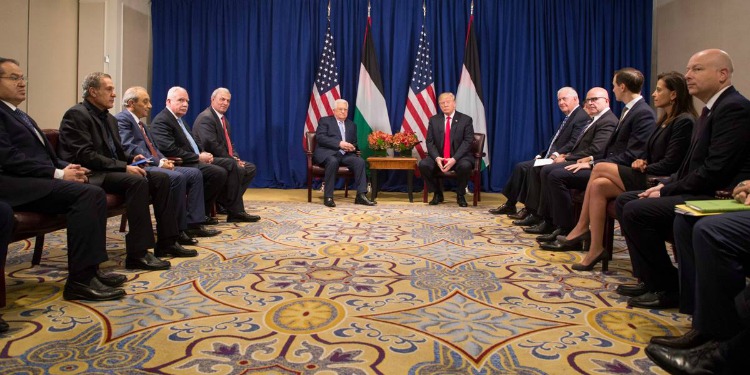Five Takeaways from Trump’s ‘Peace to Prosperity’ Plan
Stand for Israel | June 25, 2019

The world has waited with bated breath for what the Trump administration has teased as the “Deal of the Century” — a plan to at last broker peace between Israel and the Palestinians. And now that the White House has released the outline of said plan, The Jerusalem Post’s Seth J. Frantzman has broken down what is being called a “new vision for the Palestinian people and broader Middle East”:
Structure of the plan and the current situation
The plan is divided into three parts: unleashing economic potential, empowering the Palestinian people, and enhancing Palestinian governance.
Each section is around 10 pages long, which makes them appear equal in importance. The three sections are divided into sub-sections, where a total of 50 different topics are covered, from educational access to property rights and roads and rail connections. In this, the plan appears exhaustive…
Grants: Reinventing the wheel or putting a Trump brand on Palestinian issues
The plan envisions that capital raised in support of the concept will be placed into a new fund “administered by an established multilateral development bank.”
Basically, it sounds like replacing existing models of funding for the Palestinians, such as UNRWA, with a new fund whose leadership will come from the “beneficiary countries,” which will implement projects and give grants.
The plan appears to have two main goals in 10 years: double the GDP of the Palestinians, and create one million jobs…
Elephant in the room: Israel
The prosperity plan appears to be presented in a vacuum in which Israel’s role is hidden from view. For instance, when the plan speaks about “unleashing” the economic potential of the Palestinians, it says what is needed is to develop contract rights, the rule of law and to reduce trade barriers…
Plan reveals challenges facing Palestinians
The plan’s main insight is in mapping the huge number of hurdles the Palestinians face today. For instance, from agriculture to housing, the brochure spells out each problem that exists in the West Bank and Gaza.
These are major challenges. Some of them also lack clarity…
Missing the political horizon
What’s next?
This plan, like so many before it, contains a lot of generalizations and hopeful words. Its sentiments may be right, but the question will be if this is a realistic model that the US and its allies will actually invest in or if this is just a nice-looking brochure.
Some parts of the plan appear to be more generalization than substance. It is hampered by ignoring the political realities.
This is part of its goal, to focus purely on the economy and prosperity. But the Palestinian leadership has rejected it, understanding that it seeks to go around the leadership and focus only on prosperity without a political endgame…
